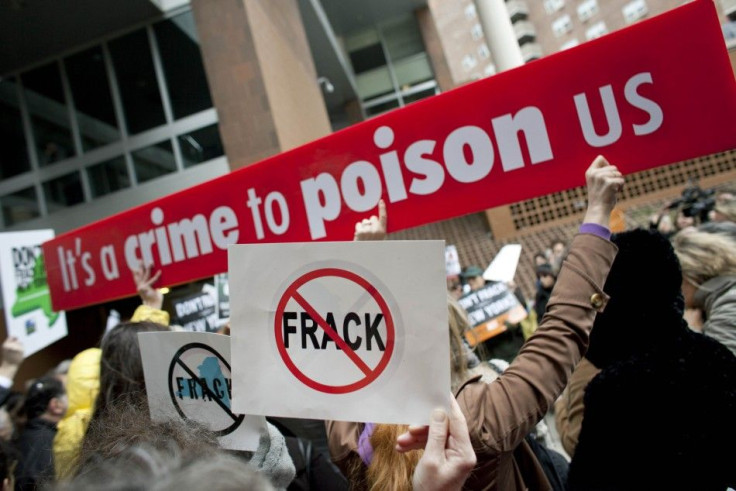Another Risk From Hydraulic Fracturing (Fracking): Dust Inhaled By Workers Linked To Deadly Lung Disease

A new study by the National Institute of Occupational and Health finds that workers at 11 hydraulic fracturing sites in five states have been exposed to high levels of dust, including sands that can cause silicosis, a grave disease that leads to scarring and inflammation of the lungs, the Center for Effective Government reported Friday.
Fracking, which blasts millions of gallons of water and chemicals to extract natural gas or oil from fractured rocks and shale, has caused U.S. oil and gas production to skyrocket. The technique has been heavily criticized, and some environmentalists contend fracking contaminates groundwater.
Large quantities of silica sands are used during hydraulic fracturing. The material is delivered via truck and then loaded into sand movers. The sands are then mixed with fracking fluids. Transporting, moving and refilling silica sands into and through sand movers can expose workers who inhale the particles, according to NIOSH.
The onset of silicosis can occur from five to 20 years, with the consequences ranging from shortness of breath to death.
There is little information known on the effects of exposure to silica and fracking chemicals on oil and gas extraction workers, NIOSH states. According to the study, more than 100 air samples tested by NIOSH showed high concentrations of silica dust in the breathing area of workers at 11 sites, exceeding the Occupational Safety and Health Administration's permissible exposure limit.
© Copyright IBTimes 2024. All rights reserved.





















